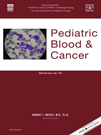Abstract
Background
Although the association of some congenital malformations and specific genetic syndromes is well understood, the association between minor anomalies and cancer is not well known. In recent years some researchers have reported studies establishing this association in different types of cancer. In this study, we aimed to investigate the prevalence and patterns of age-independent minor anomalies in childhood cancer patients.
Procedure
Two hundred patients with various types of cancer and 200 healthy controls were examined by two different medical geneticists for minor anomalies who evaluated all the cases and controls simultaneously. Besides minor anomalies, information on the consanguinity between the parents and occurrence of cancer in relatives were also recorded. The types of minor anomalies in different types of cancer, the number of minor anomalies in patients and controls, the association between cancer and the occurrence of different types of minor anomalies were also evaluated.
Results
The consanguinity and the history of cancer in relatives were significantly more prevalent in patients (P = 0.04 and P < 0.001, respectively). The number of minor anomalies in patients were significantly higher compared to the controls (P < 0.01). Particularly, the presence of hypertelorism, high-arched palate (approximately 40-fold higher, 95% CI: 12.895–125.037) and hand-foot anomalies were found to be more prevalent in patients having cancer compared to the controls.
Conclusion
The common pathways during the embryogenesis may play a role in the development of cancer. The presence and the combination of minor anomalies seem to be associated with a higher prevalence of cancer. Pediatr Blood Cancer 2011;56:1098–1102. © 2011 Wiley-Liss, Inc.




